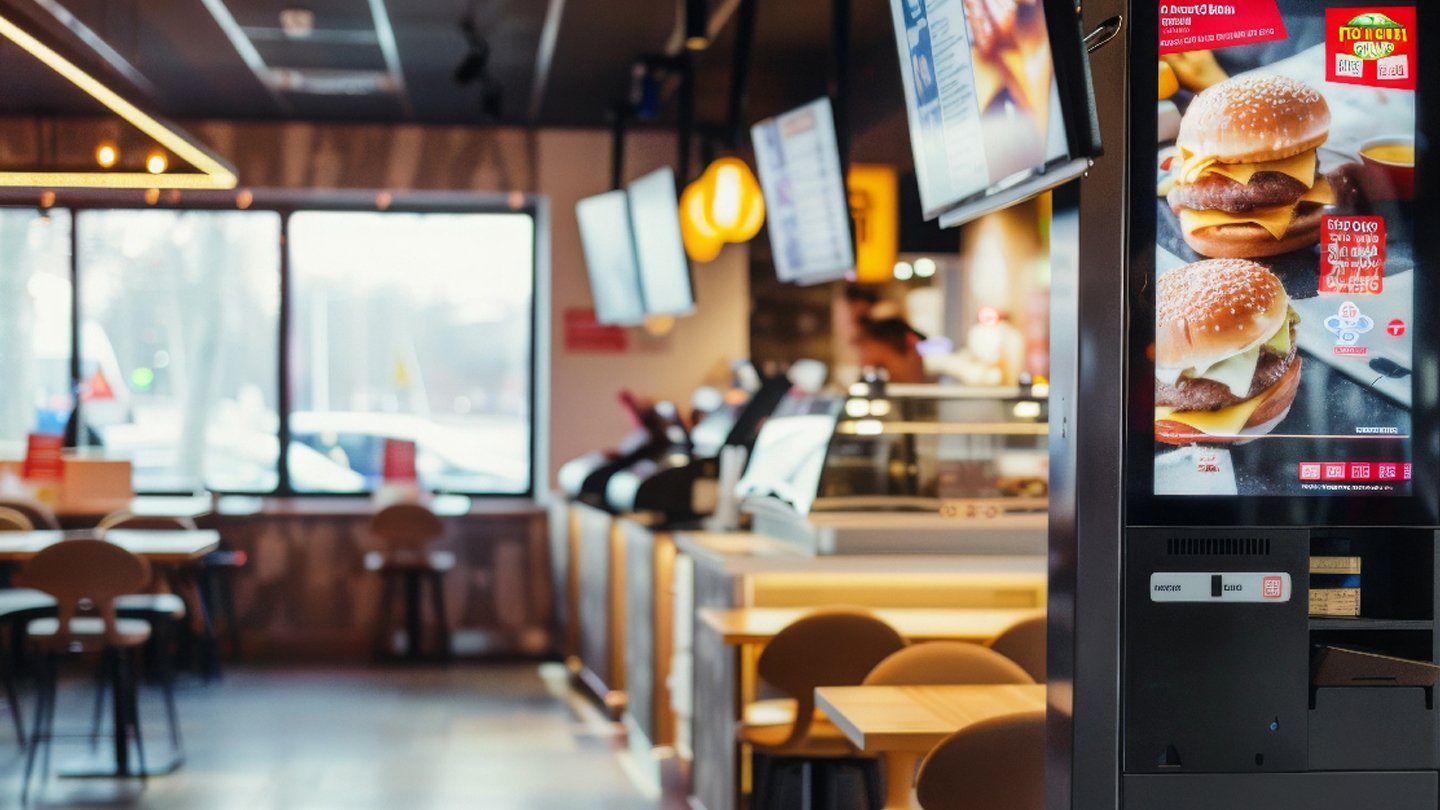How AI and Digital Menu Boards Boost Sales in QSRs
Paul Race

For quick service restaurants (QSRs), the post-pandemic era is marked by increasing competition, rising costs, and rapidly evolving customer expectations.
Customers have always looked for convenience and value when they order from QSRs, but in the current technological era, convenience takes on a whole new meaning.
Personalisation has also come to the forefront, as consumers get accustomed to having more control over how they order, collect and consume their food.
Just as technology has catalysed many of these changes, technology and data can also provide solutions. One of the solutions which is proving highly effective is combining the power of AI with digital menu boards.
AI-powered digital menu boards are smart displays that can dynamically change the menu items, prices, images, and promotions based on various factors, such as time of day, weather, inventory, customer preferences, and sales data. This allows QSRs to offer a more engaging and relevant customer experience, while also increasing sales and profitability.
Let’s take a look at how AI and digital menu boards can help you achieve these goals, as well as some of the best practices to implement them successfully.
Benefits of AI and Digital Menu Boards for QSRs
- Increasing sales and average order value:
AI and digital menu boards can use data analytics and machine learning to optimise your menu layout, design, and content to maximise customer attention and satisfaction. Smart algorithms can recommend your most profitable or popular items, upsell and cross-sell complementary products, and offer personalised discounts and loyalty rewards. According to a study by Oracle, 68% of QSR customers said they would spend more if they received personalised offers on digital menu boards. - Reducing costs and waste:
Operational costs and waste can be reduced by adjusting the menu items and prices based on the availability and demand of ingredients, as well as the expiration dates and shelf life of products. Using sensors and cloud-based software to monitor and control the brightness, temperature, and performance of the displays means they can also help you save on energy and maintenance costs. - Improving customer satisfaction and loyalty:
AI-powered digital menu boards can enhance the customer experience and loyalty by providing faster and more accurate service, as well as more choice and convenience. They can also use facial recognition and biometric sensors to identify and greet your customers, remember their previous orders and preferences, and offer customised suggestions and rewards.
Best Practices for Implementing AI and Digital Menu Boards for QSRs
So, we can see the benefits of this technology across profits, costs and customer experience. But as we’ve seen time and time again – technology is only as good as its implementation. Let’s look at a few best practices:
- Aligning the digital menu boards with the brand identity and strategy:
Of course, as a starting point, these displays should not feel out of place or disconnected from your brand. They should reflect your brand image, values, and goals, and be consistent with their other marketing channels and touchpoints. They should also use clear and compelling copy, images, and videos to communicate your unique selling proposition and value proposition to your customers.
- Testing and optimising the digital menu boards regularly:
Don’t operate in the dark. It’s essential to use data and feedback to measure the performance and impact of your digital menu boards, and to make adjustments and improvements as needed. Best practice is to conduct A/B testing and experiments to compare different menu options, layouts, designs, and promotions, and to identify the best practices and preferences for your target audience and market. - Integrating the digital menu boards with other systems and platforms:
Finally, integration is key. Ideally digital menu boards should be integrated with point-of-sale (POS) systems, inventory management systems, online ordering platforms, mobile apps, and loyalty programs, to create a seamless and omnichannel customer journey. Cloud-based software and APIs can then enable real-time data exchange and synchronisation across your devices and locations.
AI and digital menu boards are powerful tools that can help your QSR business increase sales, reduce costs, and improve customer satisfaction and loyalty. With thoughtful implementation, you can use data and technology to optimise your menu offerings and customer interactions, and gain a competitive edge in the fast-paced and dynamic food industry.
To learn more about how Glory and Acrelec can help you transform your QSR with smart automation technology, let’s start a conversation.